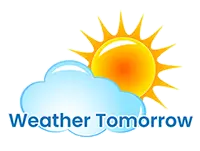Winter storm warnings are issued by the National Weather Service (NWS) when severe winter weather is expected to affect an area. These storms can bring heavy snow, freezing rain, and strong winds, creating dangerous conditions for people and disrupting travel and daily activities. Here are seven jaw-dropping facts about winter storms that you need to know to stay safe.
-
Winter storms can be difficult to predict.
Unlike hurricanes and tornadoes, which often form over the ocean and can be tracked as they move towards land, winter storms can be more difficult to forecast. These storms can form quickly and change direction unexpectedly, making it challenging for meteorologists to predict their exact path and intensity. It’s important to stay up-to-date with the latest weather forecasts and alerts and to be prepared for the possibility of a winter storm, even if it’s not currently forecast in your area.
-
Winter storms can cause power outages.
Heavy snow and ice can weigh down power lines and tree limbs, causing them to break and disrupt power to homes and businesses. In addition, strong winds can knock down power lines and damage power poles. If you lose power during a winter storm, it’s important to have emergency supplies on hand, such as flashlights, batteries, and a battery-powered radio, to stay informed about the storm and any emergency instructions.
-
Winter storms can be deadly.
Winter storms can be extremely dangerous, especially for people who are caught in the storm or who are stranded in their cars. Hypothermia, frostbite, and other cold-related injuries can occur quickly in extreme cold, and it’s important to take precautions to stay warm and dry. If you must travel during a winter storm, make sure your car is equipped with a winter emergency kit, including blankets, warm clothes, and food and water.
-
Winter storms can cause widespread travel disruptions.
Heavy snow, ice, and strong winds can make roads and highways treacherous and make it difficult or impossible to travel. Air travel can also be disrupted by winter storms, with flights being delayed or cancelled. If you have travel plans during the winter, it’s important to be flexible and to check the latest weather forecasts and travel advisories before you leave.
-
Winter storms can damage homes and buildings.
Heavy snow and ice can damage roofs, particularly if the weight of the snow and ice exceeds the structure’s load-bearing capacity. It’s important to clear snow and ice from roofs, eaves, and gutters to prevent damage. In addition, strong winds can blow shingles off roofs and cause other damage to buildings. If you suspect that your home or building has been damaged by a winter storm, it’s important to get it repaired as soon as possible to prevent further damage.
-
Winter storms can have economic impacts.
Winter storms can have significant economic impacts, with businesses and schools closing and people unable to travel or go to work. According to the National Oceanic and Atmospheric Administration (NOAA), the average winter storm costs the U.S. economy $1 billion in damages and lost productivity.
-
Winter storms can bring other hazards.
In addition to the dangers posed by the storm itself, winter storms can also bring other hazards, such as carbon monoxide poisoning from using gas-powered generators or grills indoors, or falls on icy sidewalks and driveways. It’s important to be aware of these additional hazards and to take precautions to stay safe.
In conclusion, winter storms can be dangerous and disruptive events that can affect people’s safety, travel plans, and daily activities. By being prepared and staying up-to-date with the latest weather forecasts and alerts, you can take steps









